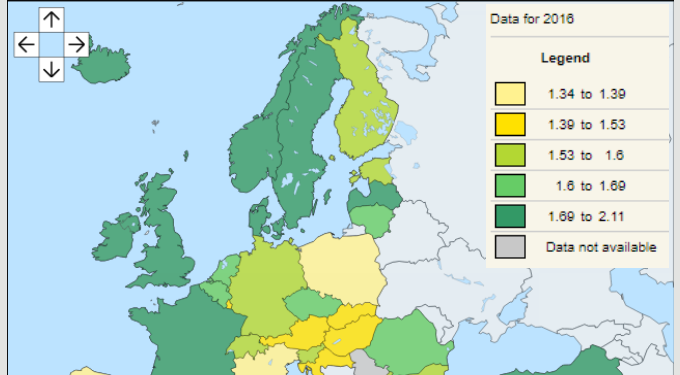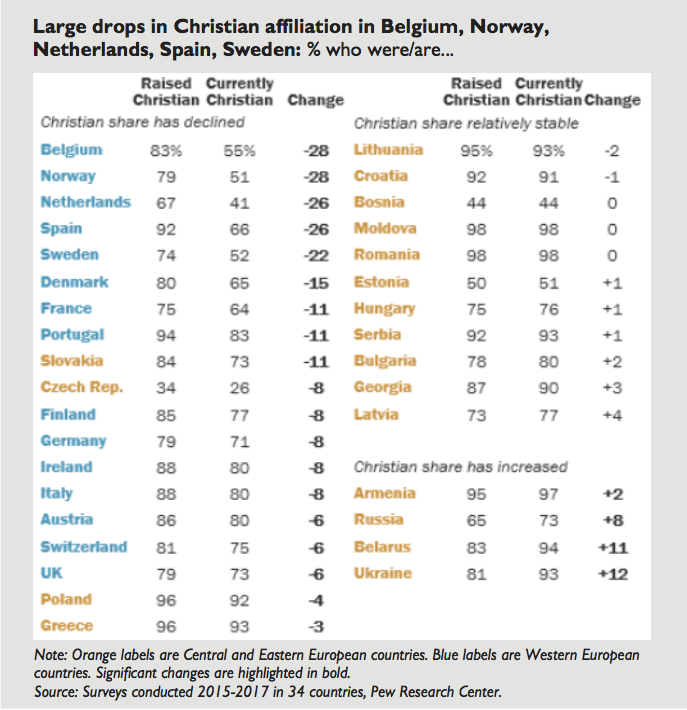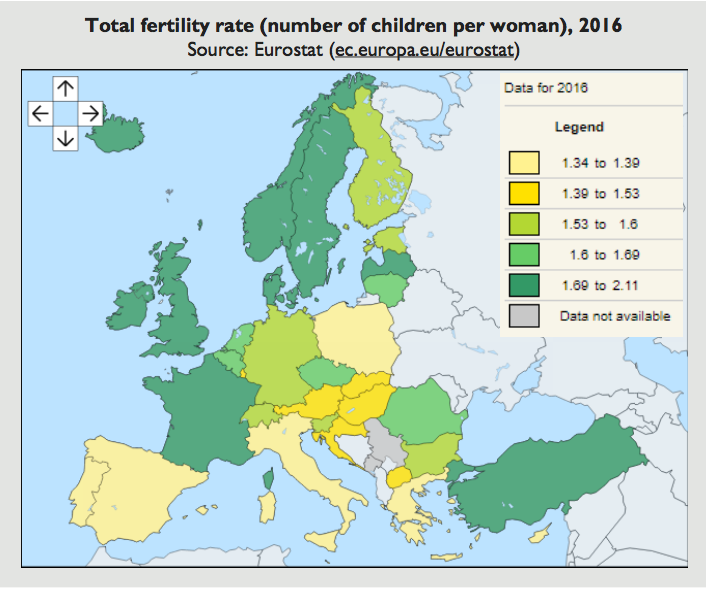
Demography is destiny (Part I)
An article from Jim Memory for Vista Magazine.
A demographic perspective on secularisation
The famous maxim that “demography is destiny” may, or may not, be attributable to Auguste Comte, but it was certainly Comte who first wrote about how population trends and distributions could determine the future of a country.
In the social sciences, predictions about human behaviour are based on theories and models, which are often proved wrong over time. However, demography is the branch of social science where predictions are more reliable. This article explores the impact of demographic change on religious populations and how this could relate to the future of secularisation in Europe.
The Maxim of Secularisation: The Church in Europe is Dying
Another maxim, at least as far as the popular press is concerned, is that Christianity is dying in Europe, with Europe becoming more secular. A headline in this morning’s Spanish newspaper El País stated that “Spain is the third highest country in Europe for those abandoning Christianity.” They quoted a Pew Research Center report which compared a whole variety of religious metrics for Eastern and Western European countries, yet the author of the El País article concentrated on the difference between those who said they were raised Christian and those who confess Christian faith today. These are sobering statistics, particularly for Western European countries (those in blue in the table). But secularisation is a complex phenomenon. The unique history and context of each country mean that neighbouring countries may be on different secularisation trajectories. A closer look at this table suggests that desecularisation is happening in many Central and Eastern European countries. And even in the same country, secularisation and desecularisation may be occurring simultaneously, depending on the measure you use.

A single arresting statistic to summarise a complex reality can be misleading. Many factors influence religious trends in Europe and this Pew report explores some of them, not least the link between Christian affiliation and national identity. Yet none are, in themselves, reliable predictors of future trends. The most reliable indicators of Europe’s religious future are demographic phenomena, specifically:
- Europe’s ageing population;
- Inward migration of religious populations from other parts of the world;
- Differential birth-rates between populations.
The Greying of Europe
Low fertility rates, low mortality rates and increased life expectancy mean that Europe’s population is getting older. In all of the EU’s 28 member countries, the total fertility rate (the average number of children born to a woman during her lifetime) is below the level necessary to maintain that country’s population. And if current fertility rate trends continue in much of Central and Southern Europe, their population size will be cut by half in the space of two generations.

The 2018 Ageing Report from the European Commission suggests that the “old-age dependency ratio (the number of people aged 65 and above relative to those aged 15 to 64) in the EU is projected to increase by 21.6 percentage points, from 29.6% in 2016 to 51.2% in 2070.” This will have significant implications for Europe’s labour force and public spending, especially the provision of public pensions.
Immigration
This almost imperceptible demographic change is closely linked to another, more visible one: immigration. The need for skilled and unskilled workers to maintain Europe’s economic growth serves as a significant “pull factor” for migrants, especially as the native working population is in decline. Despite the stubborn resistance to immigration in many Central and Eastern European countries and the hardening of migration policy across the EU, European states face a stark reality. Without immigration many European countries will see a sharp population decline in the coming years. (European Environmental Agency, 2016).
Differential birth rates
Lastly, we should note the higher differential birth rates of migrants. Over the last 50 years, many religious people from the rest of the world have migrated to Europe. According to the recent Pew Research Center report Europe’s Growing Muslim Population (2017), nearly half of this growth is due to higher fertility rates relative to non- Muslims. The Muslim population of Europe today is around 5%, though that is predicted to grow to over 10% by 2050. Less noticeably, though no less significantly, many Christians from the Global South have migrated to Europe. These are less easy to quantify, and I have been unable to locate research on the differential birth-rates of Christian migrants, but very significant numbers of African, Latin American and Asian Christians can now be found in towns and cities across Europe.
Demographics and Secularisation
Sociologists of religion have frequently focussed on religion as a social phenomenon where the conscious choices of individuals in a given, if dynamic, context cause the rises and falls in religious adherence. The main non- social mechanism for religious change is demography, specifically migration and differential birth-rates. Where migration is low and fertility no different to that of the rest of the population, the non-social mechanisms are less important. However, when migration and differential birth-rates are significantly higher this can have a dramatic demographic effect.
Eric Kaufmann’s book Shall the Religious Inherit the Earth? (2010) convincingly argued that the cumulative effect of migration from religious countries and higher fertility rates among those with religious faith will ultimately result in a reversal of the secularisation processes in Europe and the West. Rather than the rest of the world becoming more like Europe, Europe will become more like the rest of the world.
Jim Memory
Co-editor of Vista Magazine.

This Post Has 0 Comments